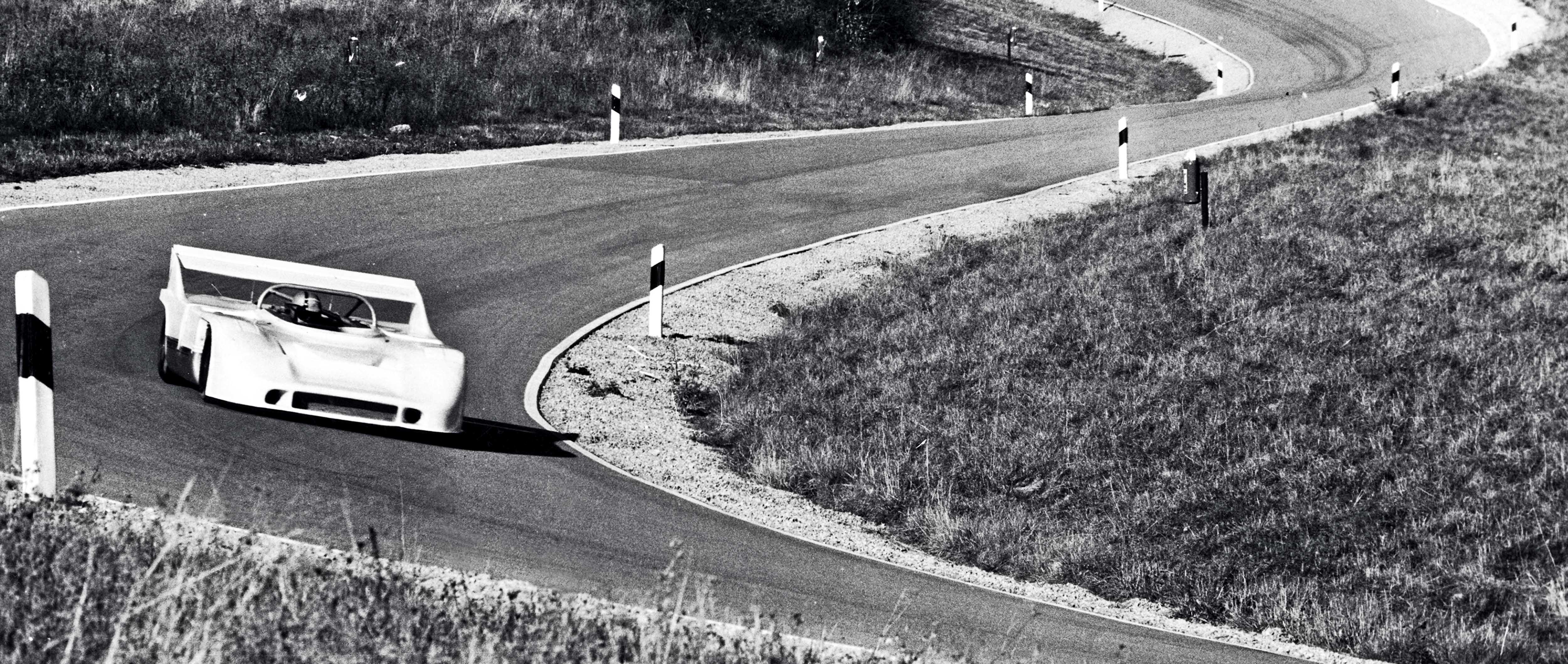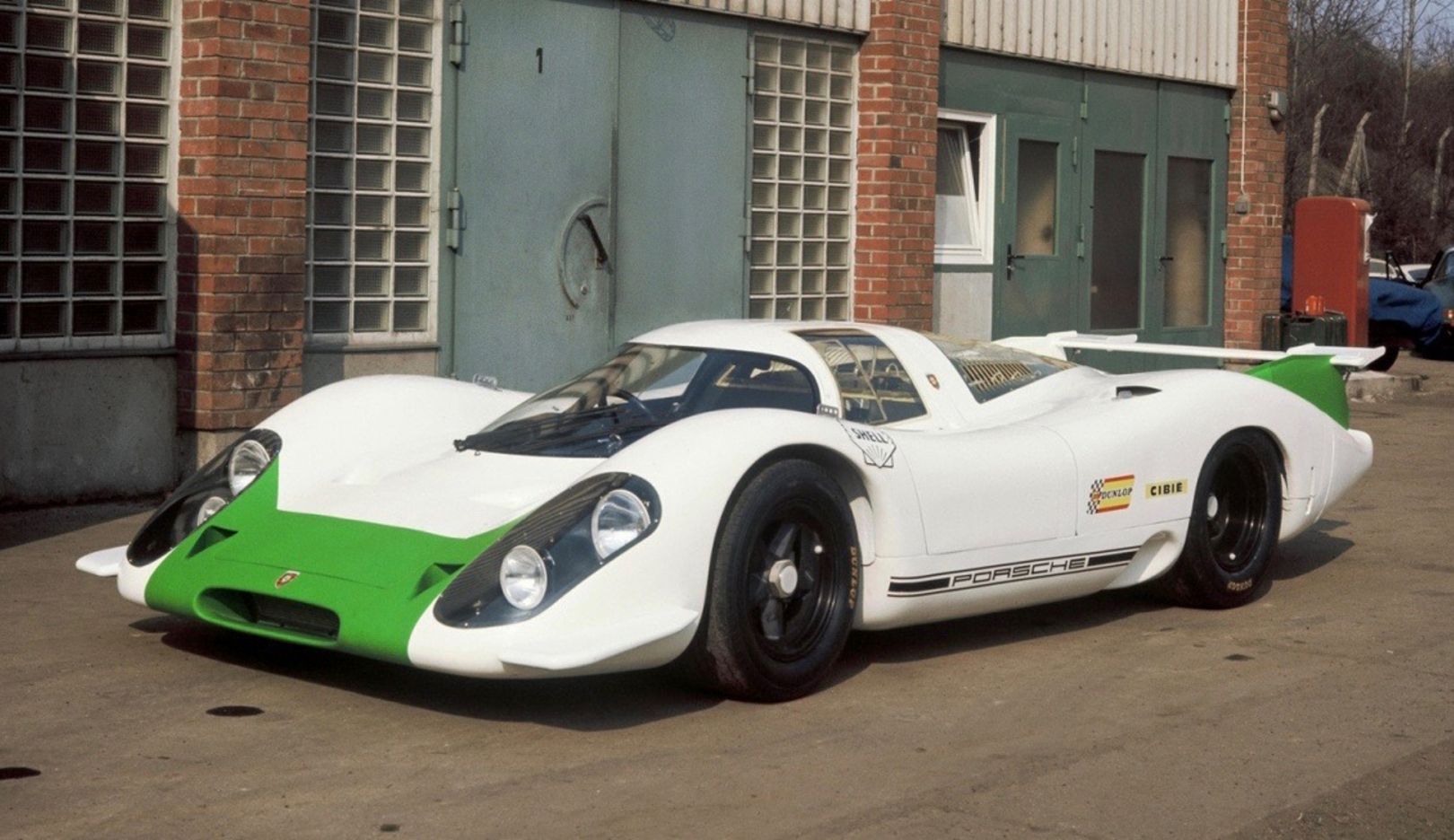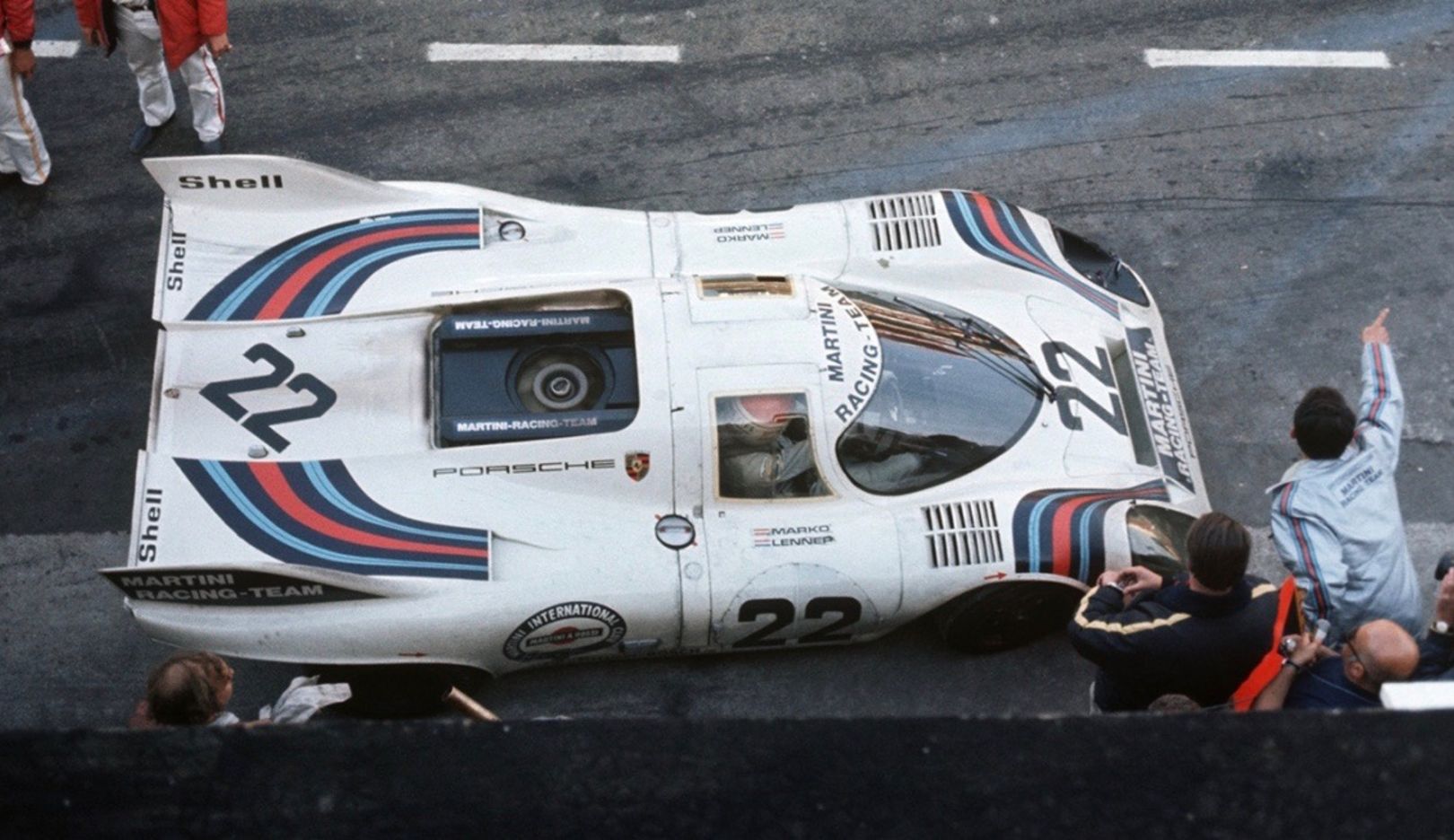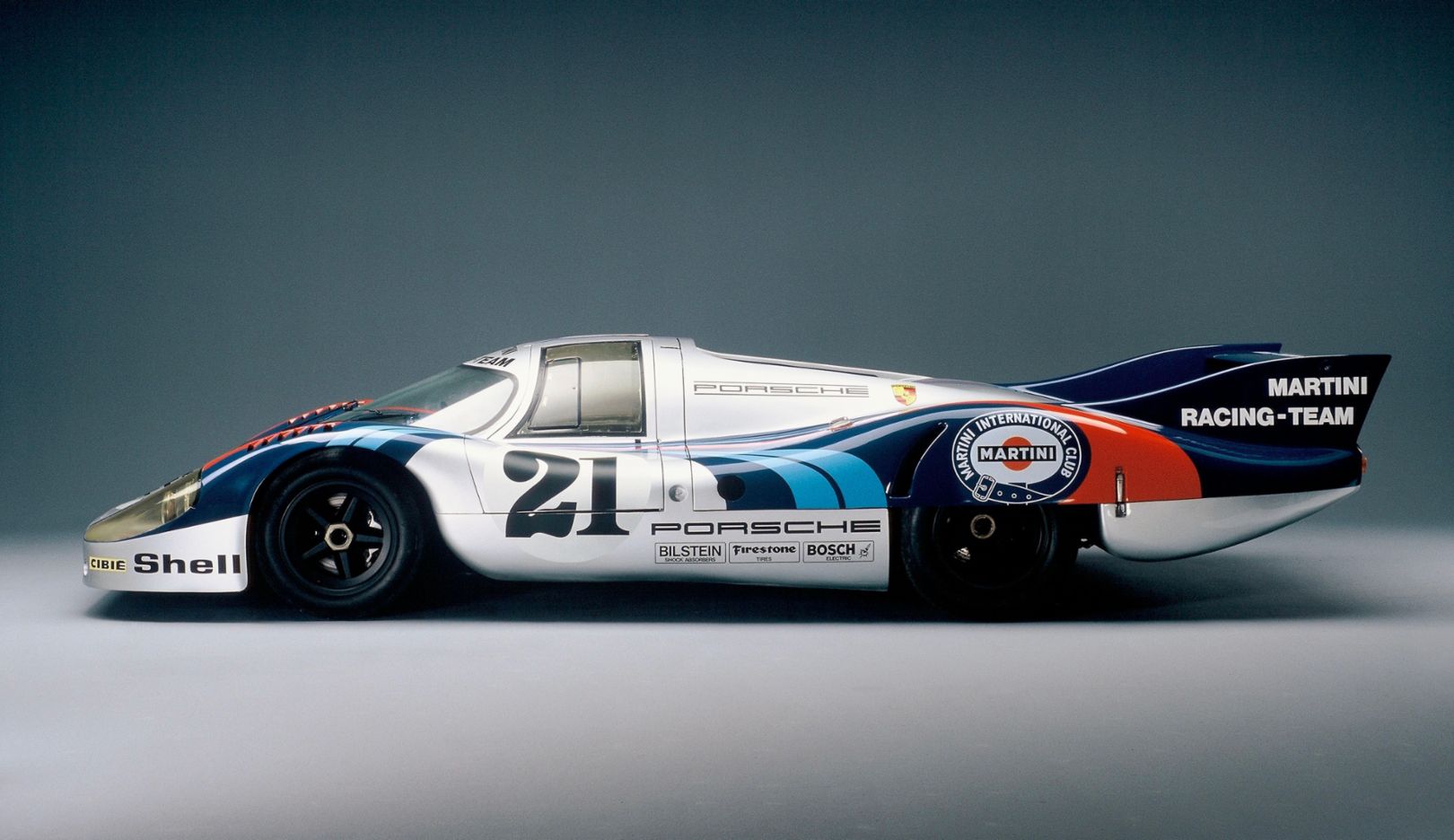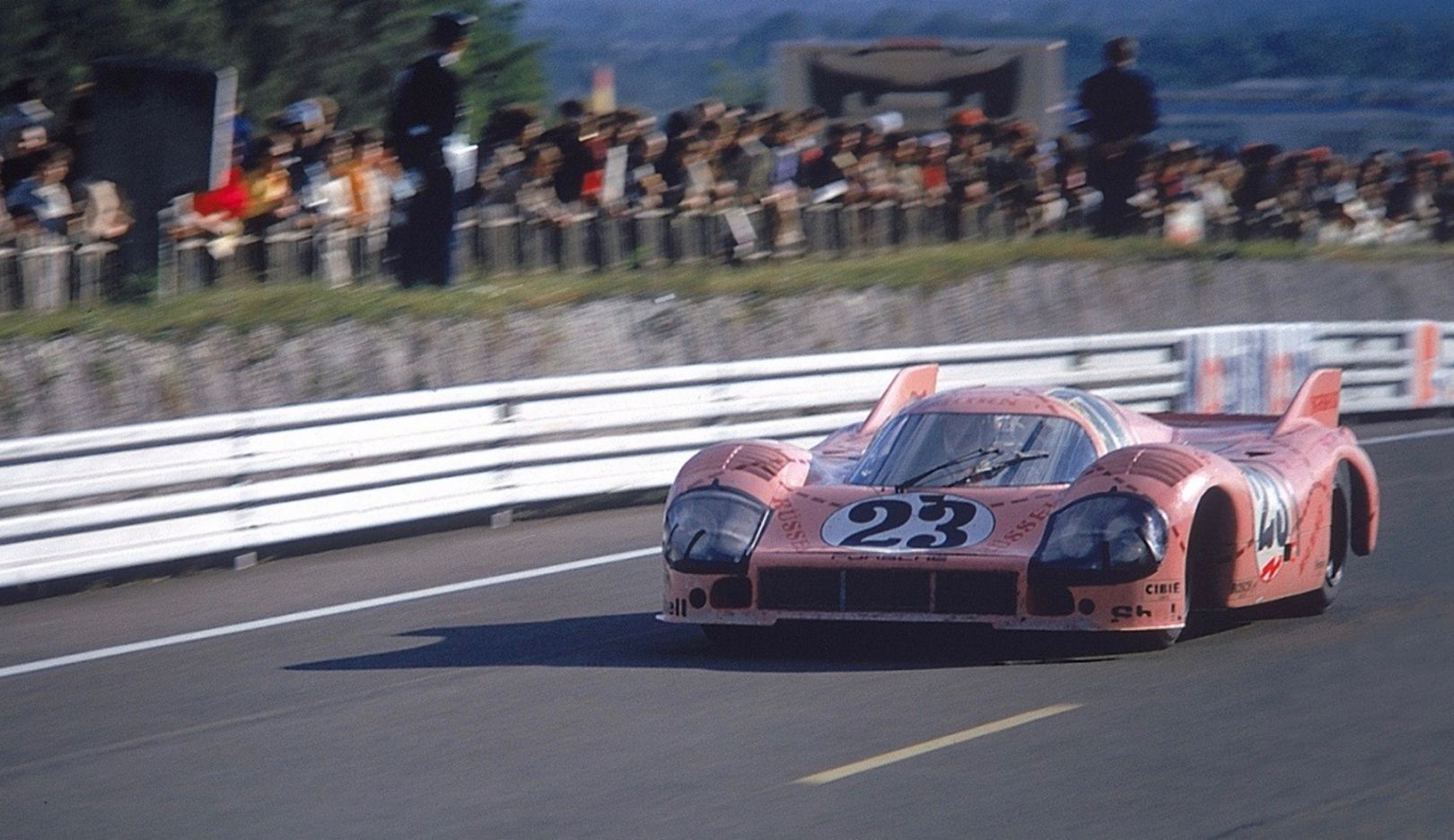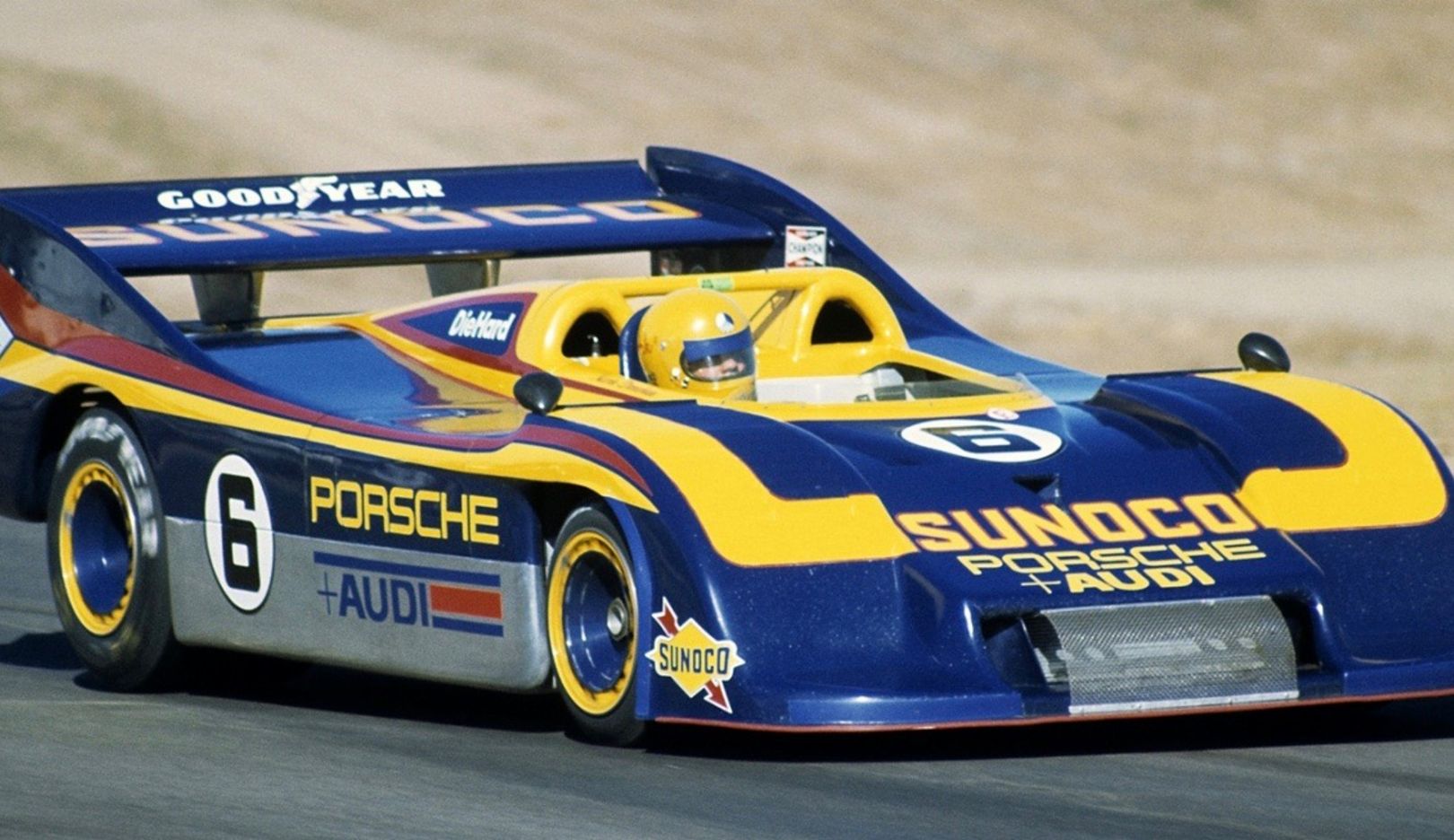Mission 917
The Weissach development center officially opened its doors on October 1, 1971. For the first time, the engineers and pilots had a suitable test track at their doorstep – one of the most important requirements for the Porsche 917’s unprecedented successes in the Can‑Am Challenge Cup.
Watkins Glen, Laguna Seca, Riverside – the names of these legendary US racecourses are inextricably linked with Porsche’s motorsport history, as is the less well-known Can-Am track in Weissach. That’s because the tranquil town not far from Stuttgart-Zuffenhausen served as the foundation for Porsche’s unprecedented successes in the North American Canadian-American Challenge Cup (Can-Am series) in the early 1970s. A specially built high-speed track made it possible to develop extreme turbocharged race cars that would compete with the strongest competitors of their time. The icon for this brief and exciting episode in the company’s history is the Porsche 917, which in its final stage of development (917/30) delivered more than 1,200 PS and proved to be virtually unbeatable.
On October 16, 1961, Ferry Porsche himself took a seat at the controls of a crawler excavator and initiated construction on the grounds acquired from the Weissach and Flacht municipalities, which at that time measured 38 hectares. A circular skid pad for chassis tests initially formed the heart of the facility. In 1967, a winding course nearly three kilometers in length was built around it, integrating all kinds of tortuous tracks with cobblestone, bumps, potholes, and even a jump. Both series production cars and race cars could be put through their paces here, achieving a whole new level of quality in Porsche test-drives. Up until that point, the engineers had had to test their developments on public roads.
With the development center just recently commissioned, the racing department moved from Zuffenhausen to Weissach at the end of 1971. And in the same year, the existing test track was joined by the 2.6-kilometer Can-Am course.
Under the leadership of Ferdinand Piëch, who was the Head of Development at that time, the racing department had long been planning to enter the North American racing series, which had been around since 1966 and is still considered to be one of the most spectacular championships to this day. Initially with very few restrictions in the form of technical rules, the Can-Am series promoted ingenuity, with large-volume engines, speeds beyond those of Formula 1, and generous prize money attracting prominent drivers. Piëch was looking for success – primarily to strengthen the brand’s presence in the important overseas market.
As one of the most successful race cars internationally even back then, the Porsche 917 offered plenty of potential. With the first-ever turbocharger installed in a Porsche, the engineers were looking to tap into previously unimagined dimensions of power as well as to continue pursuing the lightweight design concept, which had been so successful thus far. As a preliminary step, an open version was created in winter 1970/71 in the form of the 917/10, an imposing Spyder weighing in at just around 780 kilograms. Its twelve-cylinder naturally aspirated engine delivered up to 660 PS.
Willibald (“Willi”) Kauhsen was one of the first pilots to try to tame this powerhouse on the Can-Am course in Weissach. He was the busiest test-driver at that time, having covered thousands of test kilometers. In fact, he went to Weissach 50 times in a single year. His record on the Can-Am course was 50.3 seconds, which represents an average speed of more than 178 kmh.
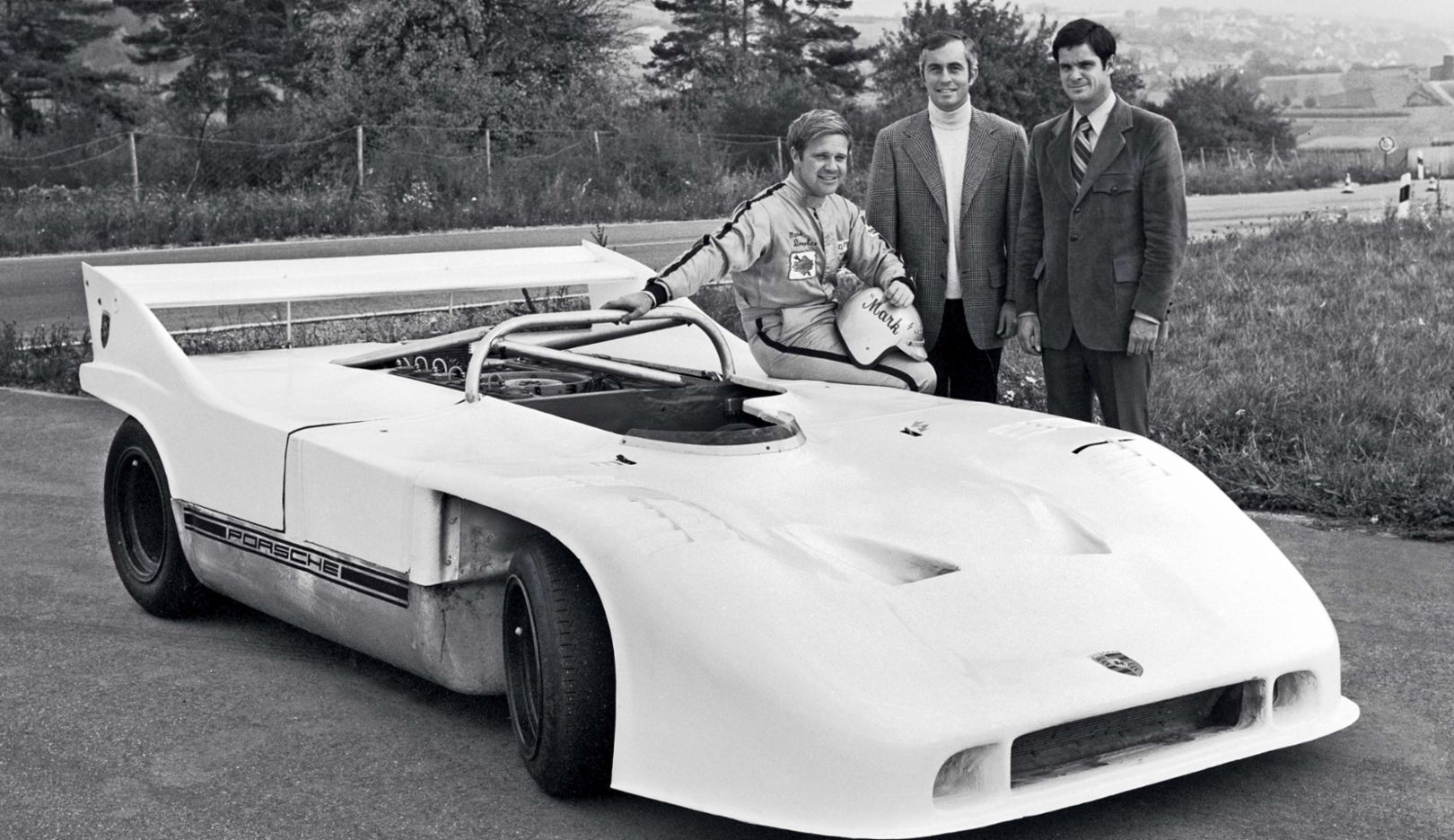
Transatlantic Partnership:
Weissach in 1971: Mark Donohue (left) with Roger Penske and Penske’s Head of Technology Don Cox during tests with the 917/10 Spyder.His high-speed routine would eventually pay off in the European Interserie, where he celebrated huge successes in the 917. But for its appearance on the North American stage, Porsche was looking for international stars, ultimately settling on 34-year-old Mark Donohue of New Jersey, an endurance specialist who was also at home in Formula 1. “A top performer with outstanding technical experience,” said Ferdinand Piëch.
Donohue was a mechanical engineer and top driver in the racing team of Roger Penske, who was also 34 years old and a Porsche and Audi dealer in Ohio. His successful team chose to use the Porsche factory car in the Can-Am series in the 1972 season. Penske was the ideal partner. As a former race car driver, he was well acquainted with motorsport in the US.
Donohue and Penske met for the first time during test-drives in Weissach on October 12, 1971. Donohue came back on October 27 and initially only wanted to stay for three days, but didn’t leave again for another three weeks, as there was a lot of testing to be done. Turbo technology had established itself at Porsche by this point. While turbochargers had been common enough for quite some time, it wasn’t until the early 1970s that the technology experienced a real breakthrough. With its developments for race cars and series production cars, Porsche was a pioneer in this field.
The first test-drives were all about resolving setup issues and getting used to the engine’s unfamiliar responsiveness. “When you press the gas pedal, it takes a second for the engine to kick in. And the buildup of boost pressure is generally too slow,” said Donohue, explaining the turbo lag after the first few miles on the Can-Am course. The turbo test came to an end after 21 laps. According to the test protocol from October 27, 1971, “Valves get stuck, leading to engine failure.”
Teething problems that needed to be resolved with ongoing development work. Donohue was fascinated: “The car is magical and the technology extremely clever,” he writes later in his memoir The Unfair Advantage. The American drove lap after lap in Weissach under the watchful eye of test-driver Willi Kauhsen. “He was drifting through every curve. I thought, ‘What’s going on?’” Kauhsen, who is from the Rhineland, explained later. “After a few laps, Mr. Piëch strolled up from the timekeeping box, showed me a piece of paper, and said: ‘See? Your time is gone.’ My time had been 50.3 seconds. Mark managed 49.8 seconds. I was devastated.”
“The car is magical and the technology extremely clever.”
Mark Donohue
By spring 1972, the Porsche turbo engines had surpassed 1,000 PS on the Weissach test bench – everything was looking good for Donohue’s successful first Can-Am season with the 917/10. But the pilot suffered a serious knee injury during a test-drive at Road Atlanta, taking him out of commission for the season. His replacement in the Penske team, George Follmer, managed to secure the title for Porsche, winning five out of eight races. An impressive introduction, as Follmer had never driven such a powerful car.
Donohue had to wait a year to demonstrate his superiority in the 1973 Can-Am race, Porsche’s last year competing in the event. He was the uncontested winner with six victories behind the wheel of the most powerful version of the twelve-cylinder car, the 917/30. Other Porsche pilots took second to fourth place behind him. Mission accomplished.
SideKICK: Continuation
Beginning in 2023, the Porsche Penske Motorsport team will conduct its factory campaigns in the FIA World Endurance Championship, including the 24 Hours of Le Mans, and in the IMSA WeatherTech SportsCar Championship. Once again, the aim is to master innovative technologies: the LMDh prototypes developed in Weissach feature a hybrid drive.
